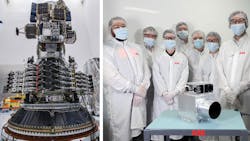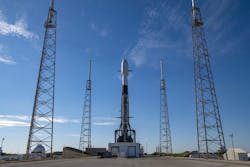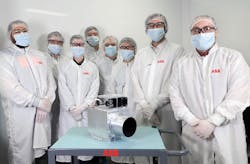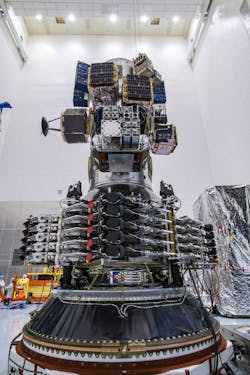When the satellite GHGSat-C2 (Hugo)—aboard the SpaceX Falcon 9—took off from Cape Canaveral Space Force Station on Sunday, it boosted into orbit with a state-of-the-art optical sensor on board.
The optical sensor manufactured by engineering firm ABB was deployed to help the mission detect methane emissions at a resolution that is 100 times higher than any other commercial or state-funded satellite.
The satellites are equipped with remote-sensing capabilities that provide greater granularity and better insights about the source of emissions. The technology can detect and quantify methane emissions from individual facilities, including coal mines, gas installations and landfills, noted GHGSat, a remote sensing company based in Montreal. This work enables governments and industries to meet their emission reduction targets and reduce the negative impact on global warming, the firm noted.
When it comes to global warming potential, methane is 84 times more potent than carbon dioxide over 20 years. It is the main constituent of natural gas and accounts for a quarter of all man-made global warming, notes GHGSat.
However, methane remains a valuable resource that can be harnessed for energy. It is estimated that up to 10 million homes could be heated with the gas escaping, largely undetected, from U.S. oil and gas production plants each year.
Hugo, brokered and integrated via Nanoracks, separated from Falcon 9, 68 minutes after liftoff. It is expected to enter commercial service within a few weeks.
The launch marked the first space collaboration between GHGSat and ABB Measurement & Analytics Canada. GHGSat launched the world’s first high-resolution satellite capable of measuring greenhouse gas (CO2 & CH4) emissions from any industrial facility in the world in June 2016, and “Iris” (GHGSat-C1) launched Sept. 2, 2020.
GHGSat plans to have a fleet of 10 commercial, high-resolution satellites in orbit by the end of 2022 are in the offing.
Hitching a Ride
Also aboard the SpaceX launch was a record 143 small satellites. Instead of commissioning a dedicated rocket at a much higher price, the 133 commercial and government spacecraft (including CubeSats, microsats and orbital transfer vehicles) and 10 Starlink internet service satellites were able to hitch a ride and save costs.
SpaceX unveiled its SmallSat Rideshare Program in 2019, bolstering competition in the growing commercial space sector. The “rideshare” concept is a recent space-commerce opportunity that provides access to space in relatively affordable ways. The going rate to launch a 440-lb. satellite runs as low as $1 million and $5,000 for every 2.2 lb. above that base level, according to the company.
About the Author

Rehana Begg
Editor-in-Chief, Machine Design
As Machine Design’s content lead, Rehana Begg is tasked with elevating the voice of the design and multi-disciplinary engineer in the face of digital transformation and engineering innovation. Begg has more than 24 years of editorial experience and has spent the past decade in the trenches of industrial manufacturing, focusing on new technologies, manufacturing innovation and business. Her B2B career has taken her from corporate boardrooms to plant floors and underground mining stopes, covering everything from automation & IIoT, robotics, mechanical design and additive manufacturing to plant operations, maintenance, reliability and continuous improvement. Begg holds an MBA, a Master of Journalism degree, and a BA (Hons.) in Political Science. She is committed to lifelong learning and feeds her passion for innovation in publishing, transparent science and clear communication by attending relevant conferences and seminars/workshops.
Follow Rehana Begg via the following social media handles:
X: @rehanabegg
LinkedIn: @rehanabegg and @MachineDesign



